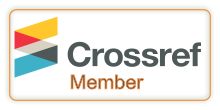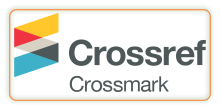TOXICITY (TOXIC MATERIAL) SCORE AND COCKTAIL TREATMENTS (COVI WONDER) FOR LONG COVID: A RETROSPECTIVE COHORT STUDY
DOI:
https://doi.org/10.29121/granthaalayah.v13.i5.2025.6166Keywords:
Covid-19 Injectables, Healing Protocols, Long Covid Syndrome, Shedding, Toxicity Score, Toxicology Test, Cocktail Treatment (Covi Wonder), Healing Protocol, Graphene Oxide, Polyacrylamide Hydrogel, MicrochipsAbstract [English]
Introduction: A long Covid represents systemic, disabling conditions of more than three months that associated with acute SARS-CoV-2 infections or post-acute sequelae of Covid (PASC). It can be diagnosed on clinical bases without a definite diagnostic tool nor a treatment. The study was done to evaluate both the toxicity score of the blood for the diagnosis of and the Cocktail medication for the healing of long Covid.
Methods: Among patients who visited our clinic from June 2022 to January 2025, 48 patients with long Covid-19 finished all the series of peripheral blood smear, blood chemistry and blood toxicology tests more than twice. While 10 patients did not have cocktail medications to treat their long Covid, 38 patients were treated by the recommended protocols including Cocktail medications of our clinic. Among 38 patients, one outlier, who showed familial allergic reactions to PEG (polyethylene glycol) was removed from the Wilcoxon matched paired t tests.
Results: The mean age of the untreated 10 patients was 59.7 ± 9.55 years old and that of treated 37 patients was 56.1 ± 13.61 years. Untreated patients with Cocktail medication showed minimal improvements of their previous symptoms in the following visits, and the toxicity score of the blood increased significantly from 12.90 ± 7.20 to 18.30 ± 5.25 (Wilcoxon test: z = - 2.536, p= 0.011). Treated 37 patients with cocktail medication showed significant symptomatic improvements in their follow-up visits and the toxicity score of the blood significantly decreased from 12.92 ± 5.18 to 7.76 ± 2.99 (Wilcoxon Test: z = - 4.783, p < 0.001).
Conclusion: The results show that the toxicity (toxic material) score of the blood can be a diagnostic tool for and the Cocktail medications can be a healing protocol for the long Covid.
Downloads
References
Ballering, A. V., van Zon, S. K. R., et al. (2022). Persistence of Somatic Symptoms After COVID-19 in The Netherlands: An Observational Cohort Study. The Lancet, 400(10350), 452–461. https://doi.org/10.1016/S0140-6736(22)01214-4 DOI: https://doi.org/10.1016/S0140-6736(22)01214-4
Bhattacharjee, B., et al. (2025). Immunological and Antigenic Signatures Associated with Chronic Illnesses After COVID-19 Vaccination. MedRxiv. https://doi.org/10.1101/2025.02.18.25322379 DOI: https://doi.org/10.1101/2025.02.18.25322379
Centers for Disease Control and Prevention. (2025). Clinical overview of Long COVID. COVID-19 | CDC.
Elflein, J. (2024). Long COVID in the U.S.—Statistics & facts. Statista. Retrieved April 30, 2025,
Ely, E. W., Brown, L. M., & Fineberg, H. V. (2024). Long COVID Defined. The New England Journal of Medicine, 391, 1746–1753. https://doi.org/10.1056/NEJMsb2408466 DOI: https://doi.org/10.1056/NEJMsb2408466
Grobbelaar, L. M., Venter, C., Vlok, M., Ngoepe, M., Laubscher, G. J., Lourens, P. J., Steenkamp, J., Kell, D. B., & Pretorius, E. (2021). SARS-CoV-2 Spike Protein S1 Induces Fibrin(ogen) Resistant to Fibrinolysis: Implications for Microclot Formation in COVID-19. Bioscience Reports, 41(8), BSR20210611. https://doi.org/10.1042/BSR20210611 DOI: https://doi.org/10.1042/BSR20210611
Hadanny, A., Zilberman-Itskovich, S., Catalogna, M., et al. (2024). Long-Term Outcomes of Hyperbaric Oxygen Therapy in Post-COVID Condition: Longitudinal Follow-Up of a Randomized Controlled Trial. Scientific Reports, 14, 3604. https://doi.org/10.1038/s41598-024-53091-3 DOI: https://doi.org/10.1038/s41598-024-53091-3
Isman, A., Nyquist, A., Strecker, B., Harinath, G., Lee, V., Zhang, X., & Zalzala, S. (2024). Low-dose Naltrexone and NAD+ for the Treatment of Patients with Persistent Fatigue Symptoms After COVID-19. Brain, Behavior, & Immunity - Health, 36, 100733. https://doi.org/10.1016/j.bbih.2024.100733 DOI: https://doi.org/10.1016/j.bbih.2024.100733
Jeon, K-Y. (2024). Healing Protocols and Toxicology Tests for Sequelae of COVID-19 Injectables. Granthaalayah. DOI: https://doi.org/10.29121/granthaalayah.v12.i6.2024.5696
Jeon, K. Y. (2022). Moving and Living Micro-Organisms in the COVID-19 Vaccines - Prevention, Early Treatment Cocktails for COVID-19, and Detoxification Methods to Reduce Sequelae of COVID-19 vaccines. American Journal of Epidemiology and Public Health, 6(1), 001–006. https://doi.org/10.37871/ajeph.id50
Lee, Y. M., & Broudy, D. (2024). Real-Time Self-Assembly of Stereomicroscopically Visible Artificial Constructions in Incubated Specimens of mRNA Products Mainly from Pfizer and Moderna: A Comprehensive Longitudinal Study. International Journal of Vaccine Theory, Practice, and Research, 3(2). https://doi.org/10.56098/586k0043 DOI: https://doi.org/10.56098/586k0043
Manu, P. (2022). Repurposing Drugs for Post–COVID-19 Fatigue Syndrome: Methylphenidate, Duloxetine, and Brexpiprazole. American Journal of Therapeutics, 29(2), e229–e230. https://doi.org/10.1097/MJT.0000000000001471 DOI: https://doi.org/10.1097/MJT.0000000000001471
Mihalcea, A. M. (2024). TransHuman: Overcoming the Global Depopulation Agenda - Volume II: Self-Assembling Nanotechnology in Medications, Geoengineering Effects, and Mesogen Microchips – Treatments and Antidotes.
Nair, C. V., Krishnakumar, M., Gutjahr, G., et al. (2025). Early biomarkers in Hospitalized Patients as Predictors of Post-Acute Sequelae of SARS-CoV-2 Infection: A One-Year Cohort Study. BMC Infectious Diseases, 25, 398. https://doi.org/10.1186/s12879-025-10619-w DOI: https://doi.org/10.1186/s12879-025-10619-w
Parums, D. V. (2024). Long COVID or Post-Acute Sequelae of SARS-CoV-2 Infection (PASC) and the Urgent Need to Identify Diagnostic Biomarkers and Risk Factors. Medical Science Monitor, 30, e946512. https://doi.org/10.12659/MSM.946512 DOI: https://doi.org/10.12659/MSM.946512
Peter, R. S., Nieters, A., Göpel, S., Merle, U., Steinacker, J. M., Deibert, P., et al. (2025). Persistent Symptoms and Clinical Findings in Adults with Post-Acute Sequelae of COVID-19/post-COVID-19 Syndrome in the Second Year After Acute Infection: A Population-Based, Nested Case-Control Study. PLoS Medicine, 22(1), e1004511. https://doi.org/10.1371/journal.pmed.100451 DOI: https://doi.org/10.1371/journal.pmed.1004511
Pfaff, E. R., Madlock-Brown, C., Baratta, J. M., et al. (2023). Coding long COVID: Characterizing a New Disease Through an ICD-10 lens. BMC Medicine, 21, 58. https://doi.org/10.1186/s12916-023-02737-6 DOI: https://doi.org/10.1186/s12916-023-02737-6
Thorp, J., Rogers, C., Cosgrove, K., Hatfill, S., Breggin, P., Pinsky, D., & McCullough, P. (2025). Association between COVID-19 Vaccination and Neuropsychiatric Conditions. Preprints. https://doi.org/10.20944/preprints202504.1099.v1 DOI: https://doi.org/10.20944/preprints202504.1099.v1
Wilson, E. M. (2024). The long COVID Puzzle: Autoimmunity, Inflammation, and Other Possible Causes. Yale Medicine. Retrieved April 30, 2025.
Wong, T. L., & Weitzer, D. J. (2021). Long COVID and Myalgic Encephalomyelitis/Chronic Fatigue Syndrome (ME/CFS)-A Systemic Review and Comparison of Clinical Presentation and Symptomatology. Medicina (Kaunas), 57(5), 418. https://doi.org/10.3390/medicina57050418 DOI: https://doi.org/10.3390/medicina57050418
Yamamoto, K. (2022). Adverse Effects of COVID-19 Vaccines and Measures to Prevent Them. Virology Journal, 19(1), 100. https://doi.org/10.1186/s12985-022-01831-0 DOI: https://doi.org/10.1186/s12985-022-01831-0
Yuhong, D. (2022). Why Strange Clots form After mRNA Jabs, Treatments to Consider. The Epoch Times.
Published
How to Cite
Issue
Section
License
Copyright (c) 2025 Ki-Yeob Jeon

This work is licensed under a Creative Commons Attribution 4.0 International License.
With the licence CC-BY, authors retain the copyright, allowing anyone to download, reuse, re-print, modify, distribute, and/or copy their contribution. The work must be properly attributed to its author.
It is not necessary to ask for further permission from the author or journal board.
This journal provides immediate open access to its content on the principle that making research freely available to the public supports a greater global exchange of knowledge.






























